Tips & Advice
Watering
Mowing
Grass Types
Weeds
Insects
Fungus
Watering
Watering is the single most important factor in the health of your lawn and landscape. With proper watering, our programs will deliver excellent results.
Basically, you should water as often as needed to prevent wilting or drought symptoms. This will vary with the seasons, with summer of course being the time of year when more frequent watering is needed. As temperatures rise, plants moisture requirements increase and more water is lost through evaporation.
Watering thoroughly once or twice weekly is usually sufficient during most of the growing season. However, during extremely hot and dry conditions watering every other day may be needed to prevent wilting. Shrubs and trees generally require less frequent watering due to their deep, extensive root system. As with turf grasses, certain trees and shrubs are more droughts resistant than others. During periods of regular rainfall, less watering by you will be required.
The most important concern about watering is that you water when needed! Some times of the day are better for watering than others, but it is better to water at any time of the day or night when you can than to not water at all!
That said, the most optimum time to water is early morning (from 3:00 AM to 8:00 AM). There is less evaporation loss during this time. Also, avoid watering in the early evening if possible, as this can encourage fungus to develop.
Lawns generally require one inch of water per week to remain green and healthy. This can come from natural rainfall, irrigation, or a combination of both. You can measure the amount of water your sprinklers deliver by placing a container underneath and recording the amount of time it takes to accumulate one inch in the container. If your sprinklers deliver one inch of water in two hours, you might want to water twice weekly at one hour per each watering to deliver the total of one inch of water to the lawn.
Avoid light watering. These encourage shallow roots. Heavier watering that soak deeply into the soil are best because they encourage deep root systems. The optimum amount of water to apply to lawns in this area is one half inch per watering twice per week.
Mowing
Proper mowing will greatly improve the appearance and condition of your lawn. Likewise, improper mowing can quickly cause damage and reverse efforts to improve the lawn. The most common mowing error is mowing too closely. Scalping can weaken, thin, or even kill areas, especially if done repeatedly.
Following are the Recommended Mowing Heights for our Local Turf grasses:
- Bermuda- 0.5 to 1.0 Inches
- Centipede- 1.5 to 2.0 Inches
- Ryegrass- 2.0 Inches
- St. Augustine- 2.0 to 3.0 Inches
- Zoysia- 0.75 to 1.0 Inches
Lawn Care — Mowing the grass in Savannah, GA
Do not allow the grass to grow too high between cuttings. The rule of thumb is to not remove more than one third of the length of the grass at one time. In other words, if you are maintaining your Centipede lawn at two inches, don’t let it grow higher than three inches before you mow. St. Augustine grows very fast and requires more frequent mowing. During the height of the growing season, it is best to mow weekly if possible.
Avoid mowing when the grass is wet.
This can spread fungus throughout the lawn if any is present and makes a mess of the undersides of your mower. Keeping a sharp blade on the mower will give a cleaner cut and can also help discourage attacks from lawn diseases, which can more easily infect blades through “ragged cuts” caused by dull mower blades.
Dropping or mulching your grass clippings back into your lawn is fine and re-cycles some nutrients back to the lawn.
However, there are some times when bagging the clippings is recommended. These include situations where there are many weeds which are seeding in the lawn (you don’t want to re-seed the weeds) and when there is a heavy cover of leaves or pine straw on the lawn (they do not contribute nutritionally and can add to thatch problems). Other than in those situations, dropping clippings is fine and less time consuming for you.
Grass Types
The Types of Turfgrasses Found in this Area.
- St. Augustine: It is the second most commonly found lawn grass in this area, and in our opinion, is the grass of choice. It is widely planted in Florida and is the predominant grass there.
- Centipede: It is the most widely planted and is the most common lawn grass found here.
- Zoysia: Zoysia is an outstanding turfgrass which does very well in our area. It is a very dense, fine textured, slow growing grass. It is not commonly found in this area, but is becoming more popular as new varieties are being developed. “Emerald” is the most popular variety.
- Bermuda: It is occasionally used as a lawn grass in this area, but is not commonly found. Its main use here is as a turf for golf course greens and fairways, where it excels. Common Bermuda Grass is usually considered a weed when found in lawns and is very difficult to control. The improved varieties are used on golf courses.
- Ryegrass: For Winter overseeding.
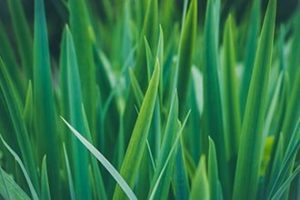
St. Augustine
It is the second most commonly found lawn grass in this area, and in our opinion, is the grass of choice. It is widely planted in Florida and is the predominant grass there.
It’s Characteristics are:
- Coarse Texture
- Correct Mowing Height – 3 Inches
- Dark Green Color
- Good Shade Tolerance
- High Fertility Requirements
- Moderate Drought Tolerance
- Poor Cold Tolerance
- Prefers a Soil Ph Of 6.0 to 7.0
- Very Fast Grower
St. Augustine is a very fast grower and forms a thick, tight turf if given adequate water and fertilizer. It competes very well against weeds. It is susceptible to damage by chinch bugs, mole crickets and disease. It is not cold tolerant but is very tolerant to salt, making it a good choice for lawns where salt water intrusion during high tides can occur. St. Augustine needs weekly mowing during the growing season. It establishes itself quickly and can be sodded, plugged, or sprigged.
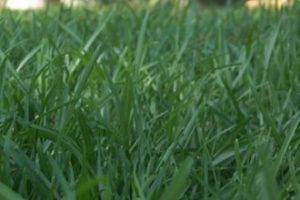
- Correct Mowing Height – 1.5 to 2 Inches
- Light Green Color
- Low Drought Tolerance
- Low Shade Tolerance
- Low to Medium Fertility Requirements
- Medium Texture
- Moderate Cold Tolerance
- Prefers a Low Soil Ph (Acid) Of 5.5 to 6.5
- Slow To Moderate Grower
As centipede is a fairly slow grower, it can sometimes go ten days to two weeks between mowing during the growing season, but weekly mowing is best. Centipede grass will often exhibit yellowing due to iron deficiency, particularly after fertilization. Centipede is susceptible to damage by mole crickets, sod webworms, spittlebugs, nematodes and fungus. Establishment is by sodding, plugging, sprigging, or seeding, although establishment by seed is slow and tedious.
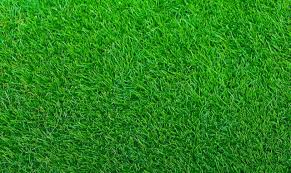
It’s Characteristics are:
- Correct Mowing Height – .5 to 1 Inch
- Dark Green Color
- Fine Texture
- Good Cold Tolerance
- Good Drought Tolerance
- Poor Shade Tolerance
- Prefers a Soil Ph Of 6.0 to 7.0
- Very Fast Growth
- Very High Fertility Requirements
Zoysia is somewhat susceptible to disease particularly dollar spot. It is fairly insect resistant. It readily develops thatch and requires low mowing heights.
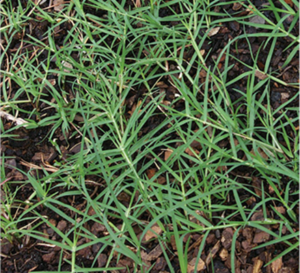
It’s Characteristics are:
- Correct Mowing Height – .5 to 1 Inch
- Dark Green Color
- Fine Texture
- Good Cold Tolerance
- Good Drought Tolerance
- Poor Shade Tolerance
- Prefers a Soil Ph Of 6.0 to 7.0
- Very Fast Growth
- Very High Fertility Requirements
To be attractive, bermuda requires a very high level of maintenance, which most homeowners are not willing or able to provide.
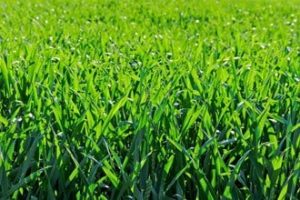
Weeds
A weed is defined very simply as “a plant out of place”. A nice stand of centipede grass growing in your shrub bed would be considered a weed. Likewise, a ground cover like ivy or liriope growing in the middle of your centipede lawn would also be considered a weed. We are concerned mainly with plants which are considered weeds wherever they are found in a landscape situation. There are basically two categories of weeds; broadleaf and grassy.
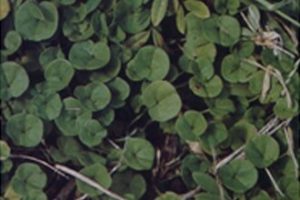
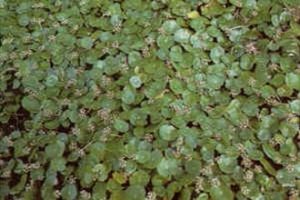
Broadleaf Weeds
Broadleaf Weeds generally have wide, round or oblong shaped leaves. Some common examples would be:
- Dollarweed
- Dichondra
- Florida betony
- Clover
- Dandelion
- Chickweed
Many common broadleaf weeds can be controlled selectively in lawns with herbicides, that is, a chemical can be applied to the lawn which will control the weed without damaging or killing the lawn itself. Care must be taken to apply the herbicide correctly or damage to the lawn can result.
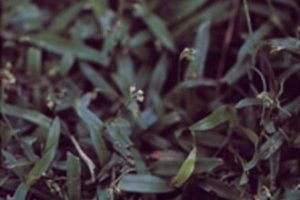

Grassy Weeds
Grassy weeds generally have long, slender, sword shaped leaves.
Some common examples are:
- Crabgrass
- Doveweed
- Goosegrass
- Annual Bluegrass
- Nutsedge
They are physiologically similar to turfgrasses and for that reason are more difficult to control chemically within lawns than broadleaf weeds. However, there are herbicides which can selectively control some grassy weeds within lawns. Again, care must be taken with the applications to avoid damaging the lawn itself.
Weed control itself can be separated into two general types:
- pre-emergence
- post-emergence
As the names imply, pre-emergence means applying a herbicide before the weeds emerge, and post-emergence means applying a herbicide after the weeds have emerged. Our lawn program uses both pre-emergent and post emergent weed control methods.
Natural weed control occurs when the turfgrass becomes well established and forms a tight thick turf which chokes and shades out many competing weeds. Weeds are always more of a problem in lawns which have thin, bare areas. Our lawn program promotes a healthy lawn which will help to naturally resist weeds from invading.
Weeds can also become a nuisance in shrub beds and natural areas. The most basic way to control them in these areas is to maintain a three to four inch layer of mulch. Weeds cannot readily germinate and grow without sunlight. The mulch layer blocks the sunlight from the soil. Pine straw, pine bark, cypress mulch and even plastics and landscape fabrics can be used as mulching materials.
Additional benefits of mulching are moisture conservation and insulating the soil from extreme heat and cold. Mulch needs to added or replaced as it breaks down because as the layer gets thinner, it can no longer do its job.
The few weeds that do break through the mulch can be pulled by hand or sprayed as needed with a non-selective weed killer such as round-up. Non-selective herbicides are weed killers that will control most any green plants that they contact, and are useful in shrub beds and natural areas. They are safe to use up very close to shrubs and trees as long as you are careful not to accidentally spray the leaves of any plants you don’t want to kill. These weed killers are absorbed only by leaves, not roots. A spray colorant can be added to the mix to show exactly where the spray is going, but is not necessary if you are careful and do your spraying on calm, windless days.
Insects
Insects are everywhere. Most are beneficial. Wasps, ladybugs, praying mantis, spiders (actually arachnids, not insects) and others feed on harmful insects. Other insects such as beetles help to break down waste in the environment.
We are concerned with the insects that cause injury to our lawns, shrubs, and trees. When their numbers increase to the point that significant injury is occurring, control becomes necessary.
Control means to keep the harmful insects populations down to acceptable levels, not to eliminate them, which is impractical and virtually impossible. Also bear in mind that when you treat to kill harmful insects, you are killing beneficial insects as well.
A few of the most common insects which are damaging to our landscapes are mole crickets, chinch bugs, white grubs, sod webworms, lace bugs and scale insects.
Some Local Plants Commonly Affected by Scale Insects are:
- Aucuba
- Banana Shrub
- Camellia
- Fatsia
- Holly
- Magnolia
- Oleander
- Palm
- Sasanqua
Mole Crickets
Mole crickets can cause very extensive damage to turfgrasses. They feed on the roots and stems of the grass and their burrowing can also damage the roots by disrupting them and causing them to dry out, especially in hot weather. Mole crickets live one year. Eggs hatch into nymphs in late spring. The nymphs go through several growing stages and become adult size by late summer.
Because mole crickets live underground, they are difficult to detect until damage starts to show up in the lawn. Signs of mole cricket activity are small burrows or trails on the surface of the soil, softness or sponginess in the turf (not always due to mole crickets), and thinning or dying turf. You can check for their presence by adding 5 ounces of dishwashing liquid to 5 gallons of water and flooding a small section of the lawn where you suspect mole crickets may be. If they are present, they will quickly come to the surface, along with any earthworms that may be there.
Control of mole crickets is very difficult, especially when they are full sized adults. The stage most susceptible to chemical control is the nymph, so early summer applications are by far the most effective. As a side note, there is a carnivorous species called the southern mole cricket, which does not feed on plants, and actually eats other harmful mole cricket species.
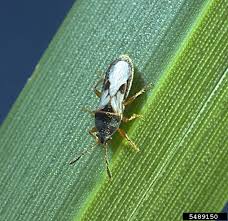
Chinch Bugs
Chinch bugs can be a major problem in St. Augustine grass. They do not attack Centipede grass. They cause damage by sucking the juices from the stems of the grass plants. The result is a withering and browning of the grass, which looks very similar to drought symptoms. Adult chinch bugs are very small (1/5″) and difficult to detect until their numbers are large at which point damage has already occurred. The various stages of nymphs are even smaller. Chinch bug damage begins to show up in the summer. They prefer hot, dry conditions. Fortunately, chinch bugs are not difficult to control.
White Grubs
White grubs are the larval stages of various types of beetles. The adult beetles lay their eggs in the soil. The eggs hatch and the larva burrow into the soil where they live for 1 to 4 years, depending on species. The grubs are white and C shaped and complete the life cycle by becoming adult beetles and moving above ground.
The grubs feed on grass roots and other plant roots in the soil. Most lawn and garden soils will contain white grubs. It is when their numbers increase to the point where damage to the turf occurs that control becomes necessary.
Sod Webworms
Sod webworms are caterpillar type insects that feed voraciously on various grasses and plants. In this area sod webworms show up in late summer. The adults (tan colored moths) look for healthy areas of grass to lay their eggs. The eggs hatch out into tiny caterpillar type worms which are almost transparent in color. They begin feeding immediately on grass blades and grow rapidly to 1 inch or more in size. Their bodies become green colored due to the grass blades they feed on. They are active at night and spend the days hiding in the thatch of the lawn.
Damaged areas are irregular in shape and look as though they have been scalped with a lawn mower. Closer inspection will reveal the ragged edges of the grass blades where feeding has occurred. Feeding increases rapidly and large affected areas can appear overnight. Fortunately, damage is temporary and a healthy lawn will recover quickly once the insects are controlled.
 Lace Bugs
Lace Bugs
Lace bugs are very small insects that feed on the undersides of the leaves of azaleas. Because azaleas are so prevalent in Savannah, lace bug damage on them is widespread. The tops of affected leaves will have a yellowish speckled appearance. This can range from just a few specks on the leaf initially to advanced stages of damage where the entire leaf will appear yellow. Control treatments should be made to both upper and lower sides of the leaves.
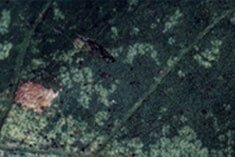
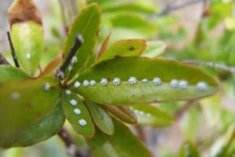 Scale Insects
Scale Insects
Scale insects cause damage to a wide variety of plants, and there are hundreds of different kinds of scales. Most of them are similar in appearance and they damage plants by sucking the plant juices. They are strange looking in that in their adult forms, they don’t look like insects at all.
Most are white or off-white colored, and appear as small flecks or bumps on the leaves of their host plants. They can be found on the top surface of the leaves, the undersides of the leaves, or both. One common type, tea scale of camellias and hollies, looks like cotton growing on the undersides of the leaves. The damage appears as a loss of the green pigment (chlorophyll) on the top of the leaf. The scale insects spread by the crawler stage of their life cycle. The most effective control for scales is an oil spray, which covers and suffocates or smothers the scale, killing it.
Fungus
There are several fungi which attack Centipede and St. Augustine lawns, with Brown patch and Gray leaf spot being the most common.
Things that Encourage a Fungus Problem:
- High Humidity and Warm Temperatures
- High Nitrogen Fertilization
- Over-Watering and Wet Conditions
- Shade
- Watering Regularly During the Evening
How to Avoid a Fungus Problem:
- Apply a Recommended Fungicide When Needed
- Avoid Excessive Nitrogen Fertilization
- Avoid Mowing When the Lawn is Wet
- Avoid Walking through the Patches (You can Spread It)
- Don’t Water Regularly During the Evening
- Mow at the Proper Height
- Water Adequately (Don’t Over-Water or Under-Water)
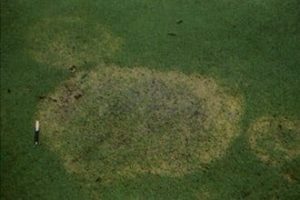 Brown Patch (Rhizoctonia Solani)
Brown Patch (Rhizoctonia Solani)
It can occur at most any time of the year, but is most common in this area in late summer through fall. It is encouraged by high moisture, high humidity, and warm temperatures. Excessive nitrogen fertilization also encourages the problem.
Brown patch fungus usually starts out in a lawn as small, circular spots which start to wilt and turn brown. Sometimes the spots will be large when they first appear, particularly in areas that had fungus in the past. As the fungus progresses, the spots grow larger.
In St. Augustine grass, the edges of the circles or patches have a yellow color while the inside of the patches are straw colored. This yellow is an indication the fungus is active and growing. In centipede grass, the color of the patches is more of a darker brown or grey without the yellow edges.
 Gray Leaf Spots
Gray Leaf Spots
Gray leaf spot has become more and more common on Southern St. Augustine lawns in recent years. It is present in most St. Augustine lawns and usually causes no damage, but when conditions are favorable it can result in thinning of the turf. It is usually scattered through the lawn and does not occur in a distinct pattern like brown patch. Generally fungus diseases will continue to be active until the environmental conditions which are encouraging them change or a fungicide is applied.
